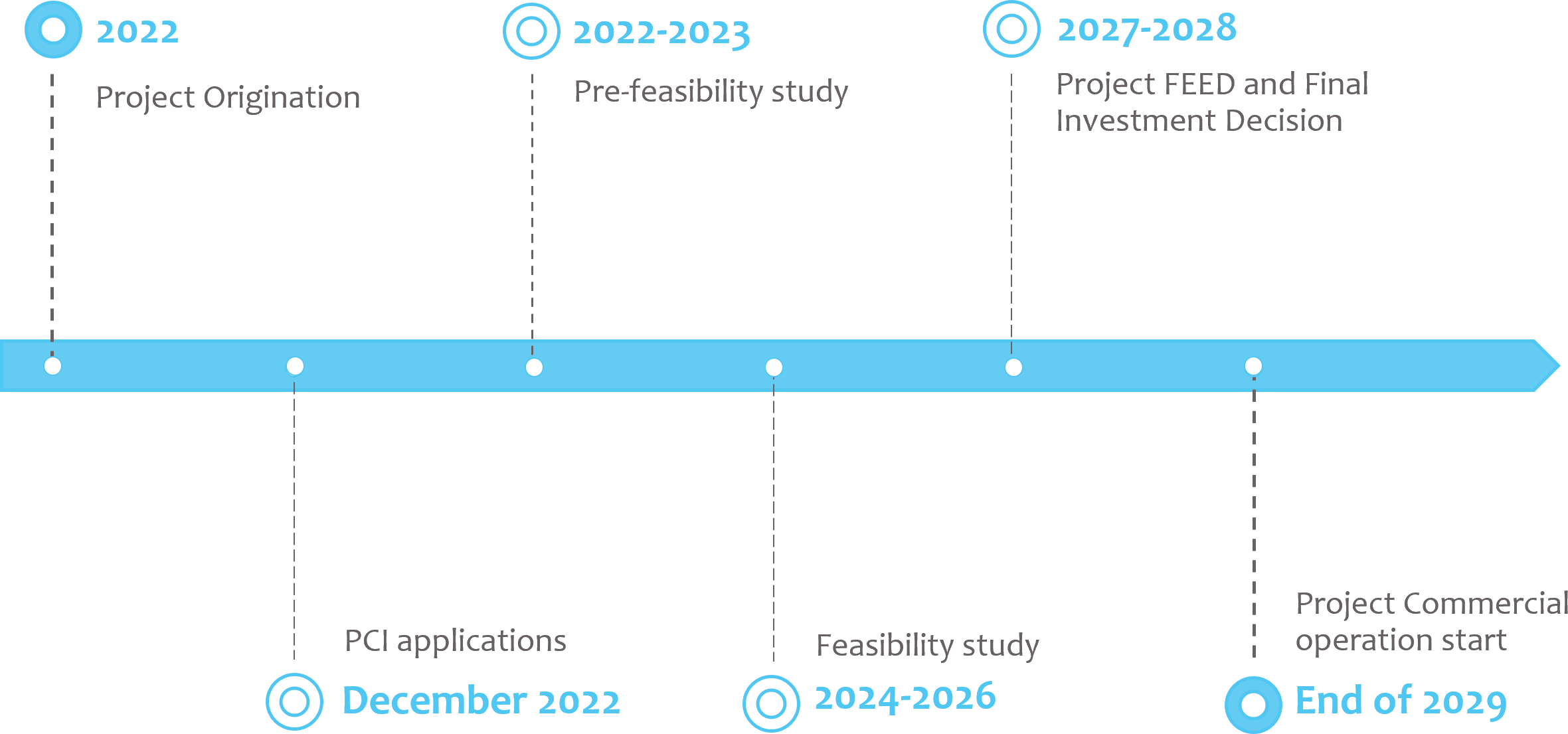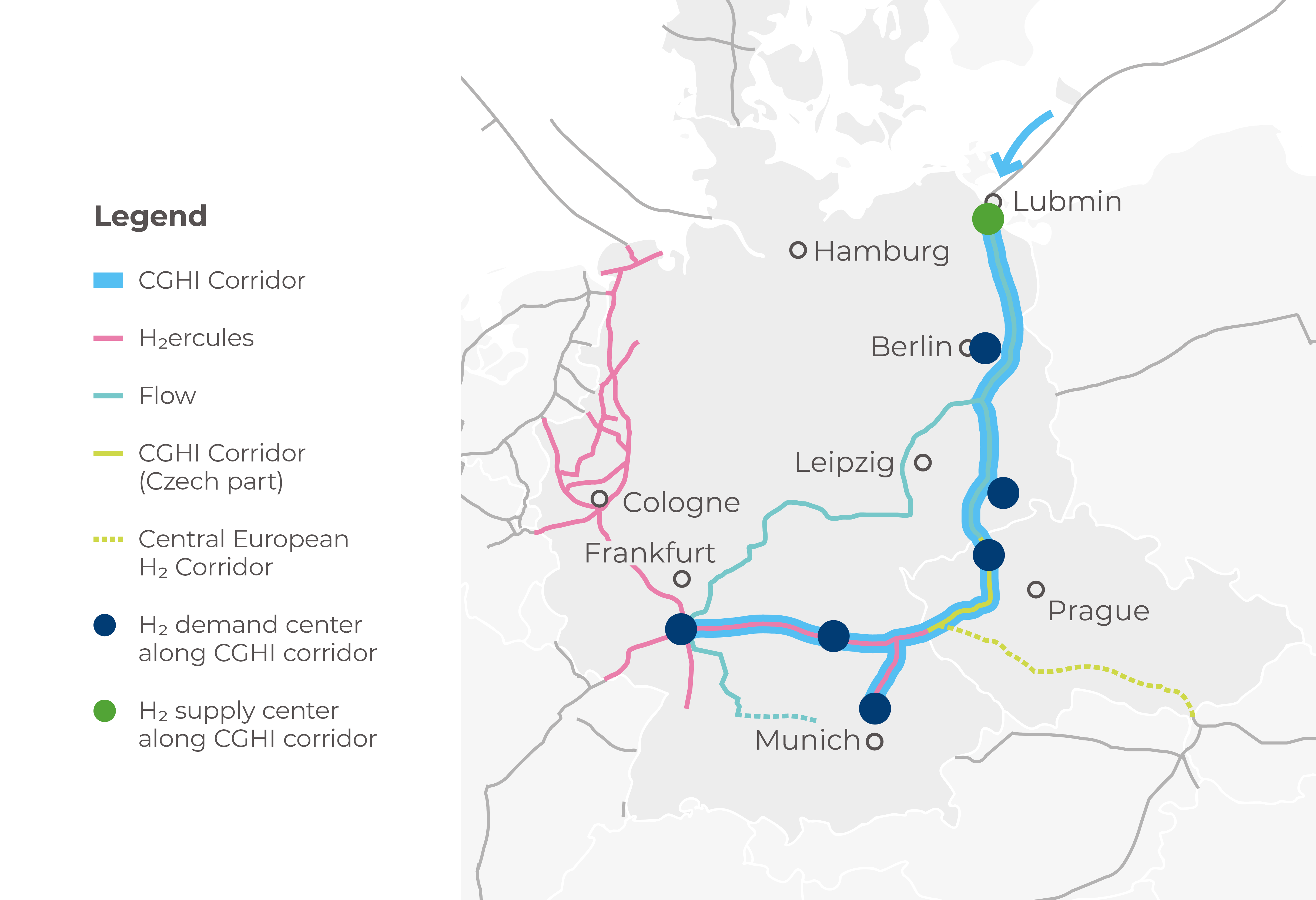CGHI vision
The vision of the Czech German Hydrogen Interconnector (CGHI) initiative to create a hydrogen interconnector to connect high potential hydrogen supply areas in Northern Germany and Baltics with expected high demand clusters in the EU (predominantly in South Germany and North Bohemia). Additionally, it will also enable connection of local suppliers and consumers along the corridor. The initiative was launched in 2022 by three gas infrastructure companies: GASCADE, NET4GAS and OGE.
Project overview
The project goal is to develop a hydrogen transport corridor from Northern Germany & Baltics via the Czech Republic to expected high demand clusters high potential hydrogen supply areas in south Germany.
Northern Germany is a very promising future supply area as well as connection point to other major supply areas in the Baltic Sea that have excellent conditions for large-scale, green hydrogen production. There is a large natural gas pipeline system that can be repurposed to transport hydrogen to the borders with the Czech Republic.
Czechia is operating a large natural gas pipeline corridor connecting Northern Germany with demand areas in South Germany. This system can be repurposed to transport hydrogen.
South Germany is expected to be one of the largest demand areas of hydrogen in Europe. Importing significant amounts of hydrogen is essential to meet projected demand in this region.

1,068 km
LENGTH

144 GWh/d
TARGET CAPACITY

2030
IMPLEMENTATION
The project aims to be operational by 2030, with later target transport capacity of up to 144 GWh of H2 per day or 1.5 million tonnes per year. The overall length of the corridor is 1,068 km The project is currently in the pre-feasibility study, focusing on assessment of the technical feasibility and as well as investment costs required to prepare the existing natural gas infrastructure to transport hydrogen.
Project timeline



